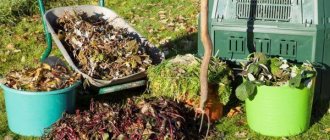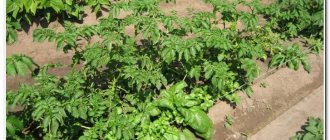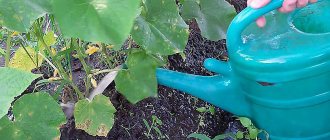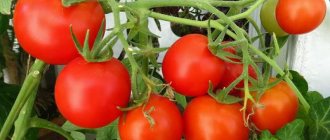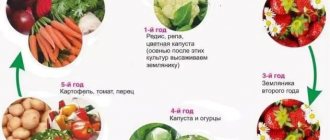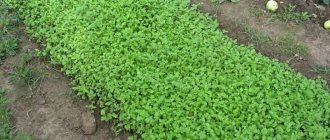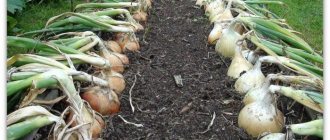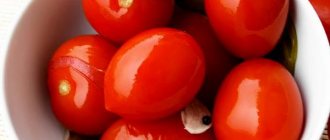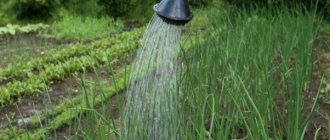Growing monocultures in a greenhouse inevitably leads to soil depletion and the accumulation of fungal diseases and pests. After the harvest, the question arises of how to restore the fertility of the land. By sowing green manure, you can fully enrich the soil for the main crops for the next season. We bring to your attention the best green fertilizers for planting in a greenhouse in the fall, which will quickly cope with this task.
Mustard
Its main advantages:
- prevents the accumulation of fungal diseases in the soil, in particular inhibits late blight spores, which often remain in the soil after tomatoes;
- the taproot of mustard goes deep into the ground, thereby loosening it;
- substances secreted by the roots of the plant convert difficult-to-digest compounds into a form that is easily accessible to greenhouse crops;
- is a source of phosphorus, which is important when planting young seedlings;
- unpretentious and the meager autumn warmth is enough for her;
- repels wireworms.
This green manure can be sown immediately after harvesting. It grows quickly, shoots appear already in 3-4 days. With frost, mustard dies and rots by spring, saturating the soil with useful microelements.
Agricultural technology of green manure in greenhouses
In order for auxiliary plants to fully reveal their positive sides, certain rules must be followed when planting them. Time for sowing green manure in the greenhouse:
- Spring. Only cold-resistant crops are used, characterized by rapid growth and green mass gain. These include: rye, mustard, sweet clover, phacelia, oats, radish.
- Autumn. At this time of year, the speed of germination and the increase in green mass are important. It is better to sow oats, rapeseed, vetch, phacelia, and rye.
Regarding the placement of green manure on a plot or in a greenhouse, 3 methods are applicable:
- Independent - planting of the main crop is carried out 1-2 weeks after planting green manure.
- Rocker - simultaneous cultivation of the main crop takes place, while the fertilizer is located between the rows.
- Compacted - green manure seeds are immediately sown in a continuous layer, seedlings are planted between the rows. The green mass of fertilizer is trimmed when it reaches 5-7 cm and left in the holes with mulch.
When using the independent method, planting the main crop should be done no earlier than after 2-3 weeks. This is due to the period of decay of green manure in the soil.
Did you know? Rapeseed and vetch are plants that can withstand air temperatures down to -5...-8°C. At the same time, they are universal, as they give an excellent harvest even when planted in summer (July, June).
Sowing
When sowing in a greenhouse in spring, the soil must first be saturated with sufficient moisture. To do this, you can use snow, covering the entire greenhouse space with it. In the absence of sufficient rainfall, irrigation can be used. After moistening, the soil is randomly covered with seeds, slightly pressed into the ground.
If seedlings are planted in rows, to sow green manure it is necessary:
- Loosen 5-7 cm of the top layer;
- Make grooves;
- Sow green manure crops;
- Sprinkle with earth;
- Pour water at room temperature (+15…+25°C).
Seedlings of plants for green manure appear on days 3-7. Until mowing, these crops require maintaining optimal moisture levels - this will speed up germination and growth of green mass. To prevent the green manure plant from turning into a source of weed seeds, cutting should be done when it reaches 15-30 cm in height (before buds form). Incorporation into the upper layers of soil is carried out using a hoe or a Fokin flat cutter. To ensure rapid and complete rotting, it is important to systematically water the beds.
There are slightly different rules for autumn sowing of green manure. For a greenhouse, this method is especially relevant if the area is not used in winter. Greenhouse rows are sown by seed scattering after the entire vegetable harvest has been harvested. Planting depth is 1-3 cm with further embedding of seed into the top layer and systematic watering. Under favorable weather conditions—a warm, long autumn and a long absence of frost—the green manure root system will have time to form properly and the green mass will grow.
If all sowing dates have been missed, it is better to give preference to frost-resistant crops. This:
- Vika;
- rye;
- rape;
- oats.
You should not choose mustard and radishes. These crops will not have time to reach the required state.
- By using autumn sowing, gardeners receive many advantages:
- prolonged exposure to green manure on the main plant;
- loosening the soil with a developed and strong root system;
- processing green mass into humus.
In spring, this mass becomes an excellent mulch, which makes it possible to plant seedlings and seeds of main crops earlier.
Important! Oats and rye cannot be buried after cutting. Their greens should rot on the surface, acting as mulch.
Digging
Gardeners have different opinions about the advisability of digging up soil after growing green manure plants. According to some experts, in order for green fertilizer to improve the soil, proper plowing of the sown area is important.
- Plowed green manure:
- prevent compaction of the top arable layer;
- increase soil moisture capacity.
In combination, this allows you to activate microbiological processes. It is important to dig up or plow green manure 1-2 weeks before planting the main crop. But they are cut before the budding period.
According to another group of experts who use the green manure method in practice, digging or deep plowing kills microorganisms and disrupts the overall structure of the top layer of nutrient soil. They recommend cutting the green mass with a flat cutter. The maximum depth of the blade is 5 cm. Green shoots are spread over the bed and mulched to prevent drying out.
- This approach allows you to get double benefits at the same time:
- The shoots, covered with a layer of mulch, gradually rot, becoming compost. This process promotes the release of nitrogen.
- Roots located in the soil, influenced by earthworms and microorganisms, decompose, forming humus.
Important! It is especially not recommended to plow winter crops. This leads to the loss of about 80% of the beneficial green manure effect.
Saturating the soil with useful organic fertilizers is an important step towards obtaining a good harvest. Green manure plants are “green helpers” for gardeners. But the success of green manure completely depends on following all the rules listed above, selecting plants, planting, cultivating and mowing.
Oats
This cereal crop was one of the first to be used as an organic fertilizer. Its effectiveness is comparable to that of manure.
Main advantages:
- young shoots of oats contain large amounts of phosphorus and potassium, necessary for the formation of strong stems and earlier flowering;
- has powerful roots that can loosen dense soil, improving the structure and making it more breathable;
- successfully fights nematodes, root rot and fungal diseases;
- oat stems are located very close to each other, suppressing the growth of weeds;
- undemanding to soil quality.
Oats are planted in a greenhouse immediately after harvesting in the place where tomatoes and eggplants grew. In 30-40 days, the plant manages to gain a height of about 15-20 cm. The green mass decomposes over the winter, enriching the soil. Oats do not like heat and therefore the plant is ideal for sowing in the autumn, but you should not delay planting either.
Rye
Main advantages:
- roots secrete substances that reduce the number of microscopic nematodes that parasitize plant roots;
- destroy harmful bacteria and microorganisms;
- loosens the soil;
- frost-resistant;
- will make any soil suitable for planting the main crop.
Rye is most productive when planted before winter. It is preferable to sow winter varieties. The plant manages to form a good root system and stems 15-20 cm long, which then rot over the winter, saturating the soil with nitrogen, potassium and phosphorus. Makes the soil loose and breathable.
Early in spring, rye begins to sprout. The regrown greenery is dug up and the main crops are planted.
Recent Entries
Chainsaw or electric saw - what to choose for the garden? 4 mistakes when growing tomatoes in pots that almost all housewives make Secrets of growing seedlings from the Japanese, who are very sensitive to the soil
Phacelia
A universal green manure that has a lot of useful properties.
Plant value:
- planted after any main crop;
- quickly restores soil after erosion;
- normalizes the acid balance of the soil and inhibits the growth of weeds;
- releases phytoncides, preventing the development of fungal and bacterial diseases;
- very decorative. Its beautiful and lush flowers have a honey scent;
- frost resistant. The seedlings tolerate temperature drops down to -7 -8 °C. This allows you to plant phacelia even in late autumn.
Characterized by rapid growth. In 40–45 days the plant produces 200–300 kg. green mass, which is comparable to 300 kg. manure This fertilizer allows you to make any soil fertile for 2-3 years. Grows well in combination with peas, beans and oats.
Planting phacelia in the fall and before winter in a greenhouse is highly effective. Its delicate leaves and stem quickly decompose, which makes it possible to obtain soil enriched with nitrogen and potassium in early spring, even before planting the main crops.
Types of green manure
Green manure is a fast-growing plant with branched, fibrous roots and lush greenery. Their main purpose is to fertilize the soil, improve the quality of the soil, and control weeds and pests. They need to be planted in early spring, immediately after the snow melts, or in the fall, when the entire harvest has been harvested.
- Green manure crops perform a number of important functions:
- inhibition of weed growth and development;
- normalization of soil acidity;
- creating favorable conditions for the reproduction of earthworms and beneficial bacteria;
- assistance in the destruction of pests, for example, phacelia suppresses the reproduction of nematodes in the soil;
- protection of seedlings from frost when planting green manure using the rocker method;
- transformation of soil into an airy, loose substrate.
Did you know? Over 400 plants can become green fertilizers. But gardeners and summer residents use only a small part of them.
Let's look at the most common ones.
| Genus | Purpose | Cultures |
| Legumes | Soil enrichment with nitrogen | Vetch, chickpeas, rapeseed, annual lupine, peas, beans, beans, lentils |
| Cereals | Weed control | Sudanese grass, oats, barley, rye, chumiza, fescue, bentgrass, wheat |
| Borage | A universal green manure planted regardless of previous and subsequent plants on the site | Phacelia |
| Cruciferous | Resistance to weeds, pests, diseases | Gray and white mustard, oilseed radish, winter-planted rapeseed, rapeseed |
When choosing green manure, take into account their compatibility with cultivated vegetables, soil, optimal planting time, and the characteristics of the plant itself. Thus, when cut, the phacelia stops growing and can be used as mulch without the need to remove the root system. If we talk about mustard, then it grows new shoots from the roots, so when planting in spring, digging up the area is required.
Find out which green manure is best to sow under cucumbers.
For open ground
The following are sown in open soil as green manure:
- oilseed radish;
- white clover;
- phacelia;
- rape.
Phacelia is an excellent honey plant that attracts insects responsible for pollinating crops. The plant is characterized by rapid growth and requires several mowings per season. The crop is not at all afraid of frost, so seeds are planted in early spring. The grown greenery shades the vegetable seedlings and acts as a dense “litter”, retaining moisture in the area.
Rapeseed is responsible for improving the structure and quality of the soil. The microelements included in the composition are comparable to humus. Young greenery protects from wind currents and the hot rays of the sun. It is worth sowing the seed early in spring or autumn, between the rows of beds.
Radish perfectly removes nitrates from the soil, stabilizes the pH level in the soil, and additionally acts as a protector against parasites, thanks to the essential oils it produces. It is sown into the soil in summer or autumn. The grown stems are used as mulch and compost to form beds for the next season.
White clover , thanks to its strongly growing and branching roots, perfectly loosens the soil, improves aeration, and prevents the development of putrefactive and stagnant processes. Sown in spring. Succulent stems make excellent compost and mulch.
Green manure crops intended for open ground are characterized by:
- abundant, rapid germination;
- clubroot resistance;
- cold resistance.
Plants prevent the loss of microelements in the soil, quickly change the structure and condition of the upper soil layer, making it permeable.
Learn about the features of hydroponic systems in greenhouses.
Let's look at the most common “green” fertilizers.
| Cultivars | Achieved effect |
| Legumes | Enriching the soil with nitrogen |
| Cereals, cruciferous | Prevents mineralization, leaching, fixes nitrogen in the soil |
| Mustard, phacelia for late sowing Broad beans, lupine, radish, sunflower, annual ryegrass, spring rape when sowing before August | Inhibits weeds and protects soil from erosion |
| Winter rapeseed, rapeseed | Produces a lot of organic matter if sown in autumn |
| Mustard, legume family | Binds sparingly soluble phosphates |
| Oilseed radish and rapeseed | Retains mineral elements, preventing them from being washed out |
| Broad beans, lupine, mustard, radish | Loosen the lower layers of soil with roots |
| Annual ryegrass, sunflower, phacelia | Suppresses the reproduction of nematode parasites |
Green manure for greenhouses
Monocultures growing in greenhouse conditions deplete the soil. There are several ways out of this situation:
- periodic replacement of the fertile top soil layer;
- constant application of organic and chemical fertilizers;
- green manure crop rotation.
The last point is worth dwelling on in more detail. By deciding to sow green manure, you prevent soil destruction while simultaneously improving its condition.
Did you know? Lupine roots are covered with formations containing nitrogen-fixing bacteria. Just 1 hectare of this plant can accumulate about 200 kg of nitrogen in the soil.
Legumes are considered to be in demand for greenhouse planting. This is explained by their symbiotic relationship with beneficial nitrogen-fixing bacteria. Plants saturate the soil with nitrogen supplied by the air, releasing nitrates into the environment. But to obtain comprehensive soil enrichment and protection, three plant families are applicable:
- cereals;
- cruciferous;
- legumes
Main characteristics of green manure for a greenhouse:
| Culture, growth period, days | Received biomass, c/ha | Nutrients, c/ha |
| Lupin, 80 | 606 | 5,03 |
| Radish, 50 | 485 | 3,99 |
| Vika, 90 | 311 | 4,34 |
| Surepka, 55 | 444 | 4,32 |
By choosing a mixture of several crops, you can get the best results.
Peas
The best natural green manure among legumes. Accumulates a large amount of nitrogen and other microelements at the plant budding stage.
Main advantages:
- allows you to improve the composition of the soil in a short time;
- is the main supplier of nitrogen for cultivated plants. Only legumes are capable of fixing atmospheric nitrogen in the soil;
- this is one of the best plants in terms of growth rate among its own kind;
- protects against nematodes;
- tolerates low temperatures well. Seeds germinate at soil temperature +5-+6 °C;
- provides food for soil microorganisms and worms;
You need to plant peas in a greenhouse after the crops that consume the most nitrogen - tomatoes and cucumbers. The time it takes for peas to gain green mass is 60-80 days. Sow along with mustard so that the plant does not get sick.
Conclusion
Green plants are an easy and inexpensive way to improve your soil and add extra nutrients to it. By planting them, you can significantly increase the fertility of the garden bed and use it almost without interruption.
Related Materials:
To bury green manure or not, expert advice
- When to sow white mustard on green manure
Green manures and their role in agriculture
When to plant green manure to get the maximum benefit from growing them
